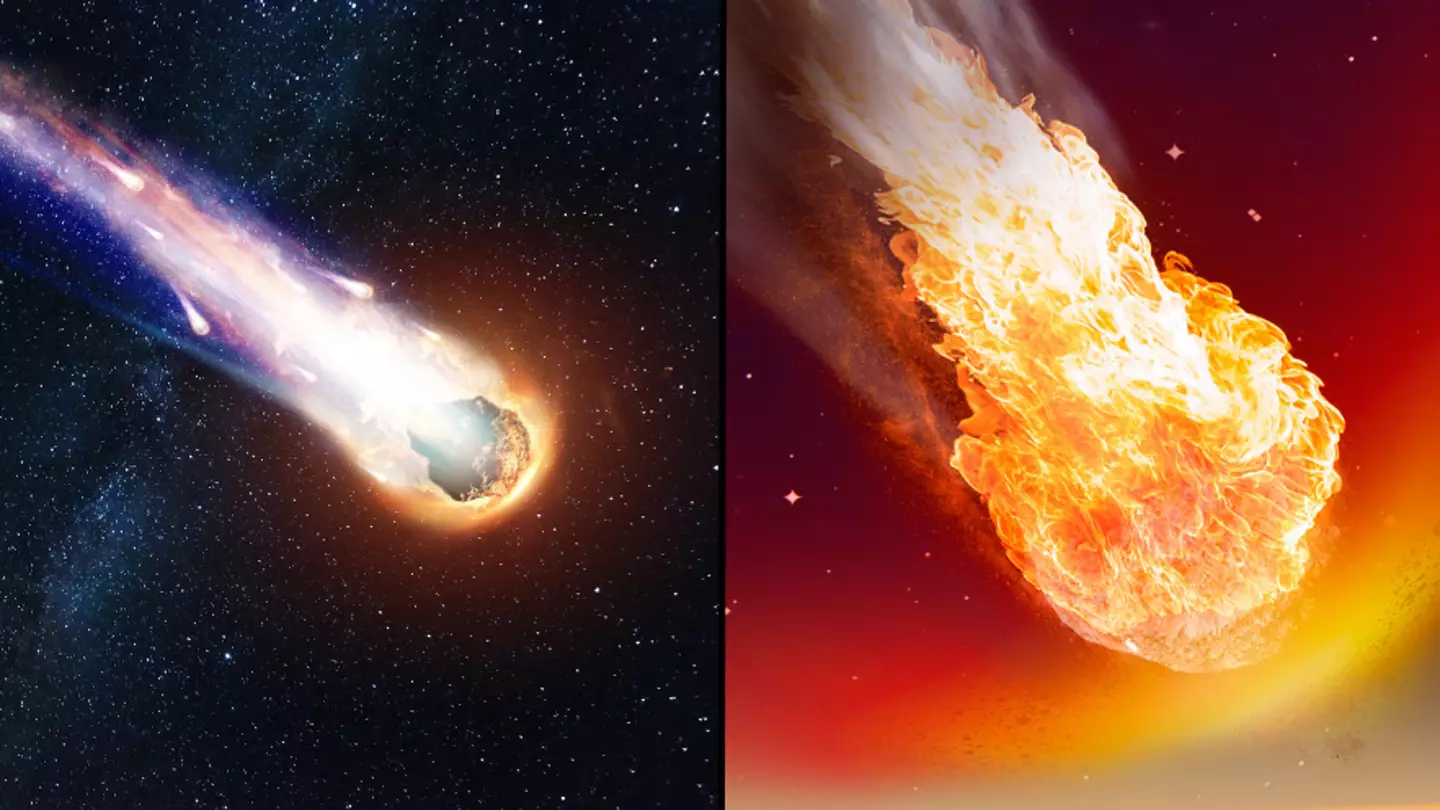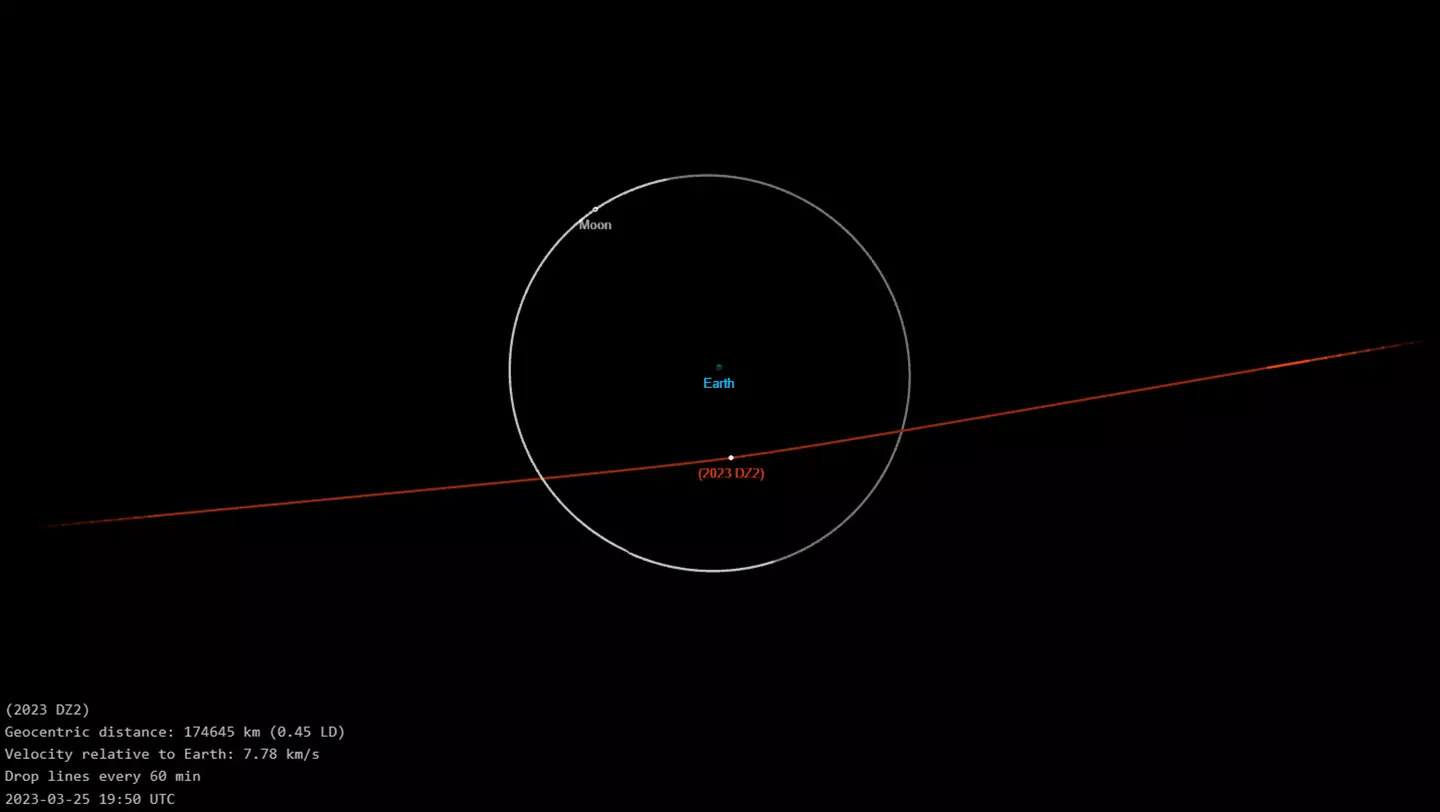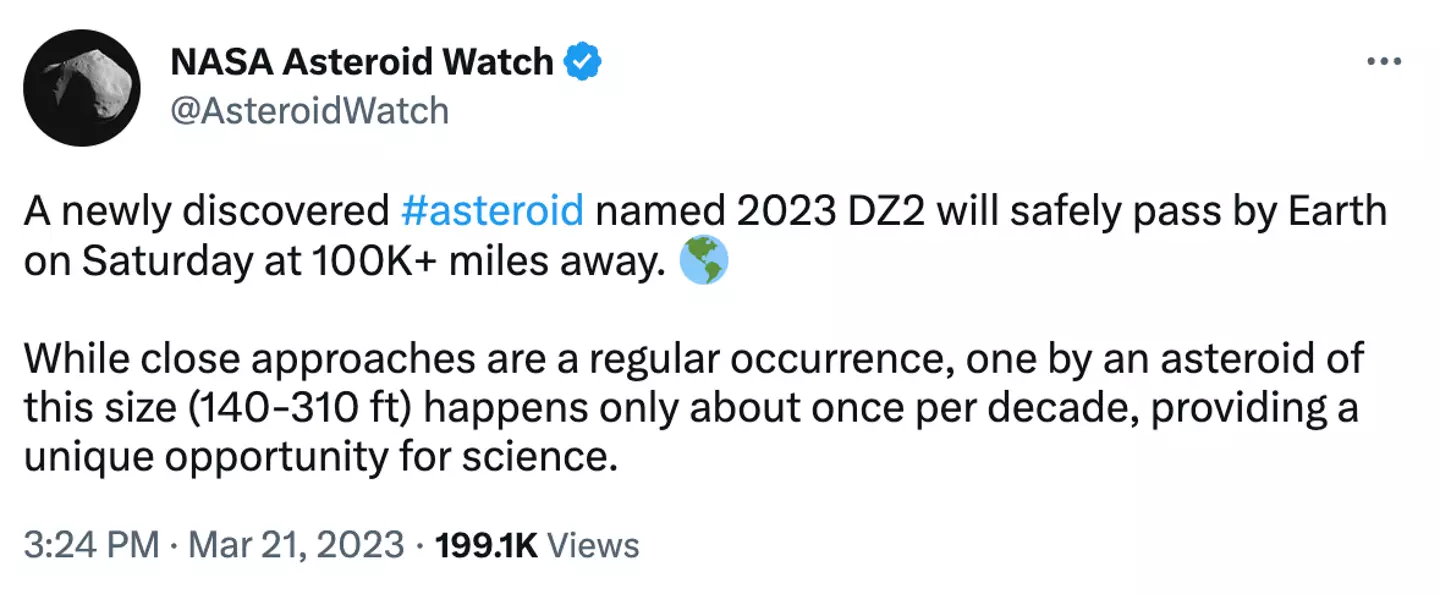
A massive asteroid will come closer to Earth than the moon this week in a phenomenon that only happens once per decade, according to NASA.
The newly discovered asteroid 2023 DZ2 is travelling at a speed of 17,403 miles per hour, with NASA saying it measures anywhere from 140 to 310 feet.
It was discovered on 27 February this year by astronomers at the Roque de los Muchachos Observatory on Spain’s La Palma, part of Canary Islands.
Advert
NASA’s Center for Near Earth Object Studies says the giant rock will miss Earth by 108,758 miles – the moon being 238,855 miles away, for context.
NASA’s Asteroid Watch team said on Twitter: “A newly discovered #asteroid named 2023 DZ2 will safely pass by Earth on Saturday at 100K+ miles away.
“While close approaches are a regular occurrence, one by an asteroid of this size (140-310 ft) happens only about once per decade, providing a unique opportunity for science.

“Astronomers with the International Asteroid Warning Network are using this close approach to learn as much as possible about 2023 DZ2 in a short time period - good practice for #PlanetaryDefense in the future if a potential asteroid threat were ever discovered.”
Advert
If you want to see 2023 DZ2 as it flies by, you could be in luck, although you’ll likely need a telescope if you want to catch a glimpse.
It will pass mostly closely to Earth on Saturday 25 March, but will be visible in the days before then, with the best window to view it thought to be on Friday evening.

Derek Smale, astronomer and programme manager at the UK Space Agency, told the Metro that the asteroid is currently only visible in large telescopes, but will brighten during its closest pass - and might even be visible in binoculars (and definitely in a ‘small telescope’) – by Thursday evening.
Advert
“If you can get away from bright street/car/building lights (and give your eyes time to adapt to the dark), you’ll have a much better chance of spotting it,” Smale explained.
“The asteroid will be brightest during its closest pass on Saturday, but the best time to see it (from the UK) is probably on Friday evening, where it will be just below the Beehive Cluster of stars in the constellation of Cancer.”
Featured Image Credit: Shutterstock